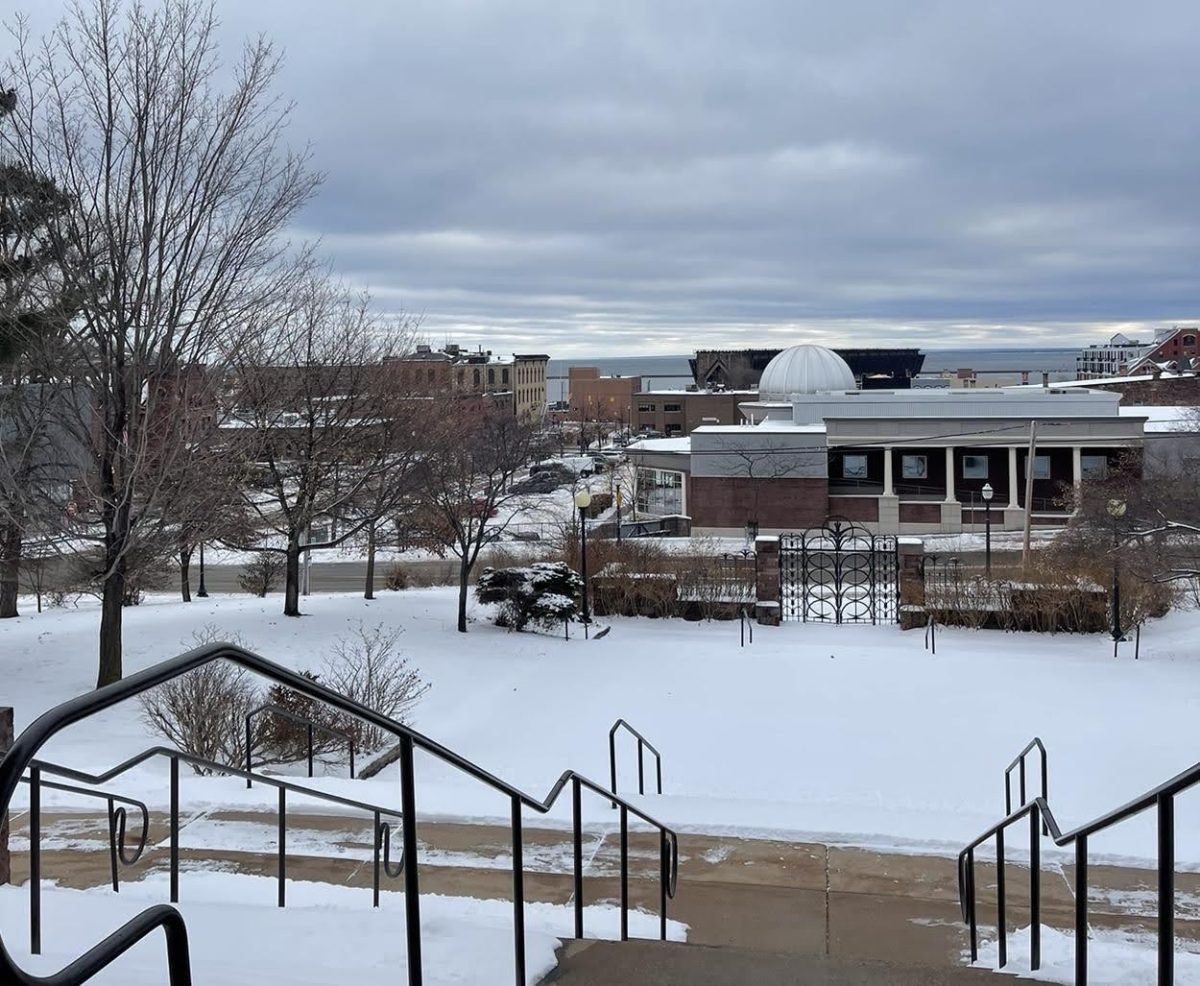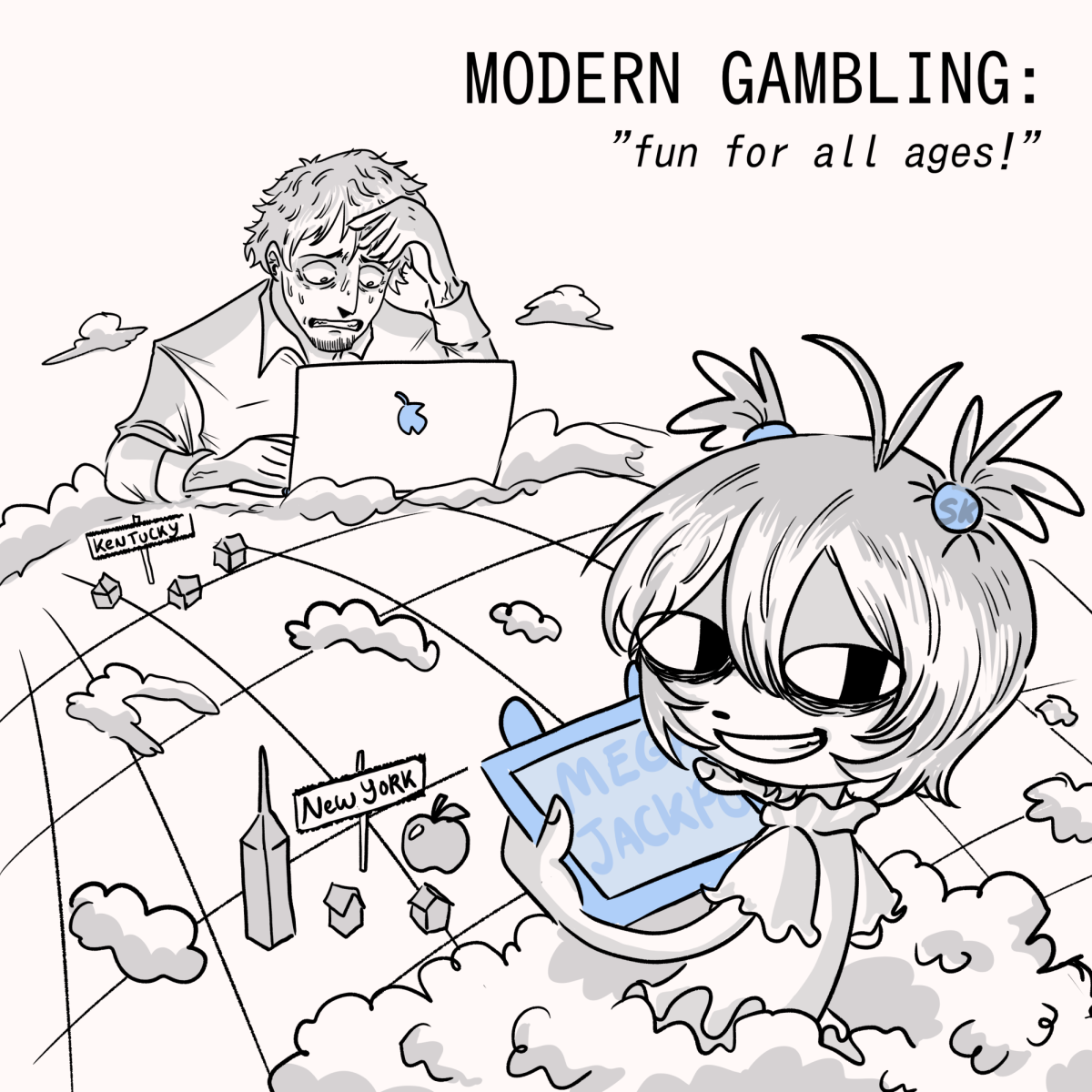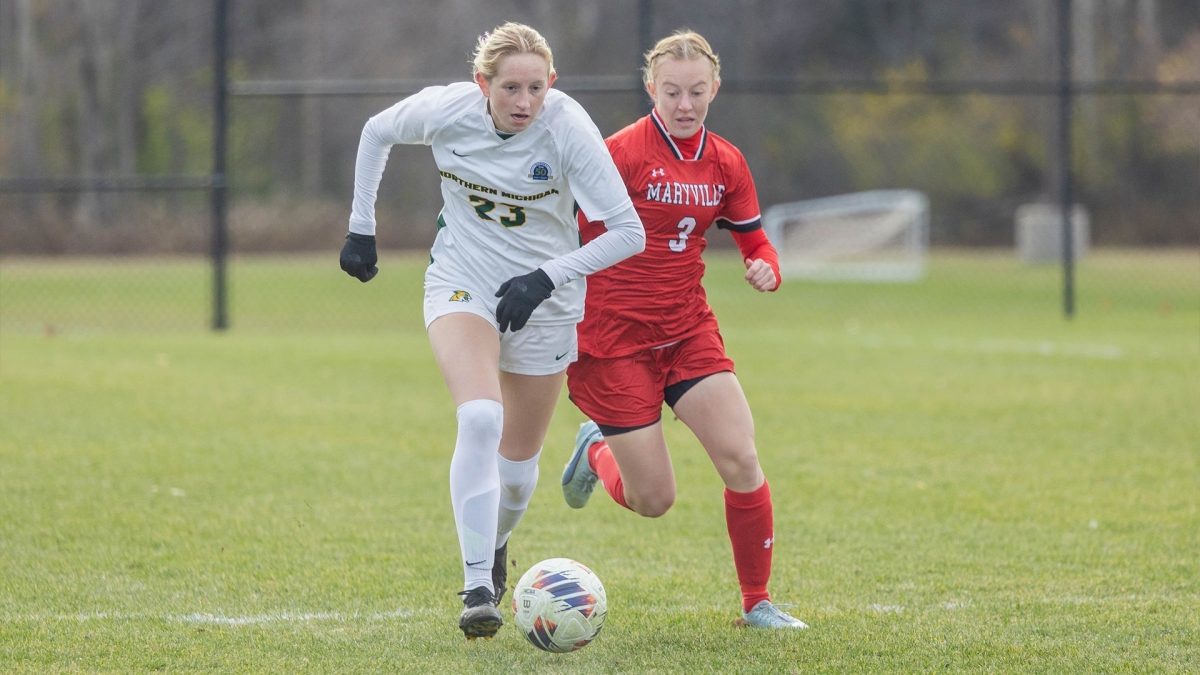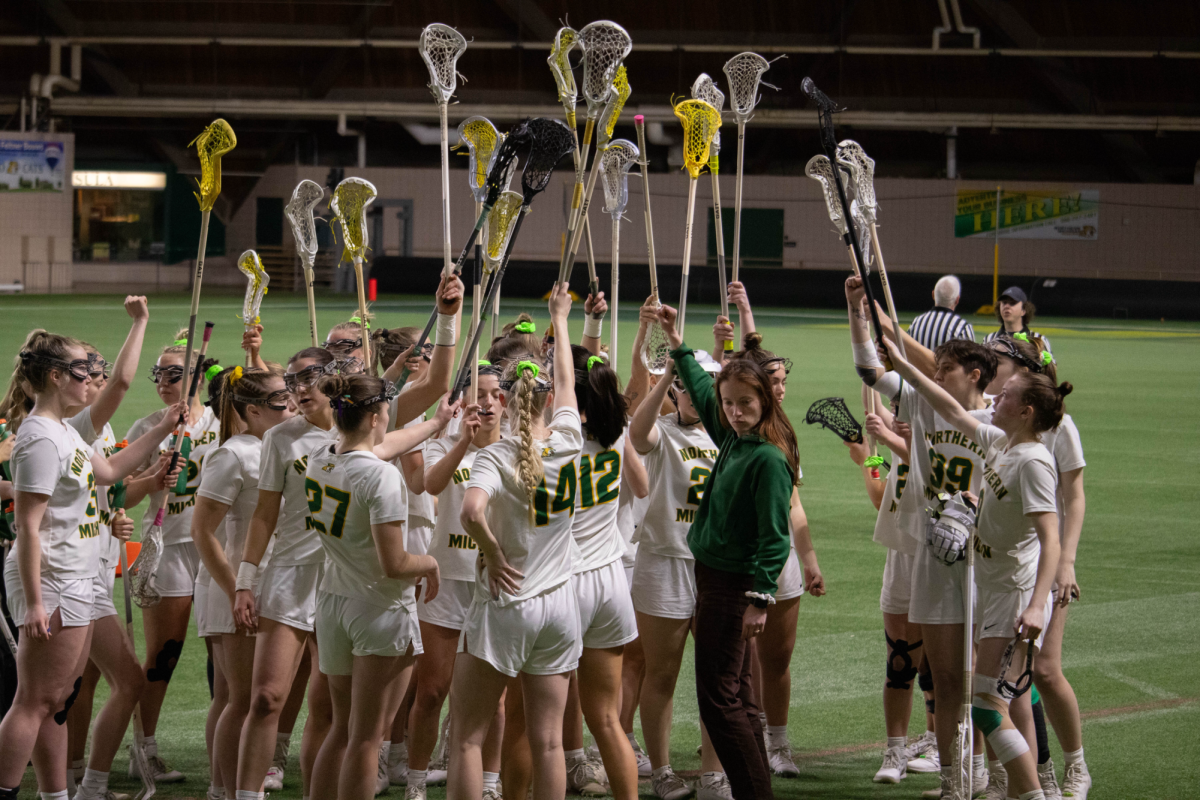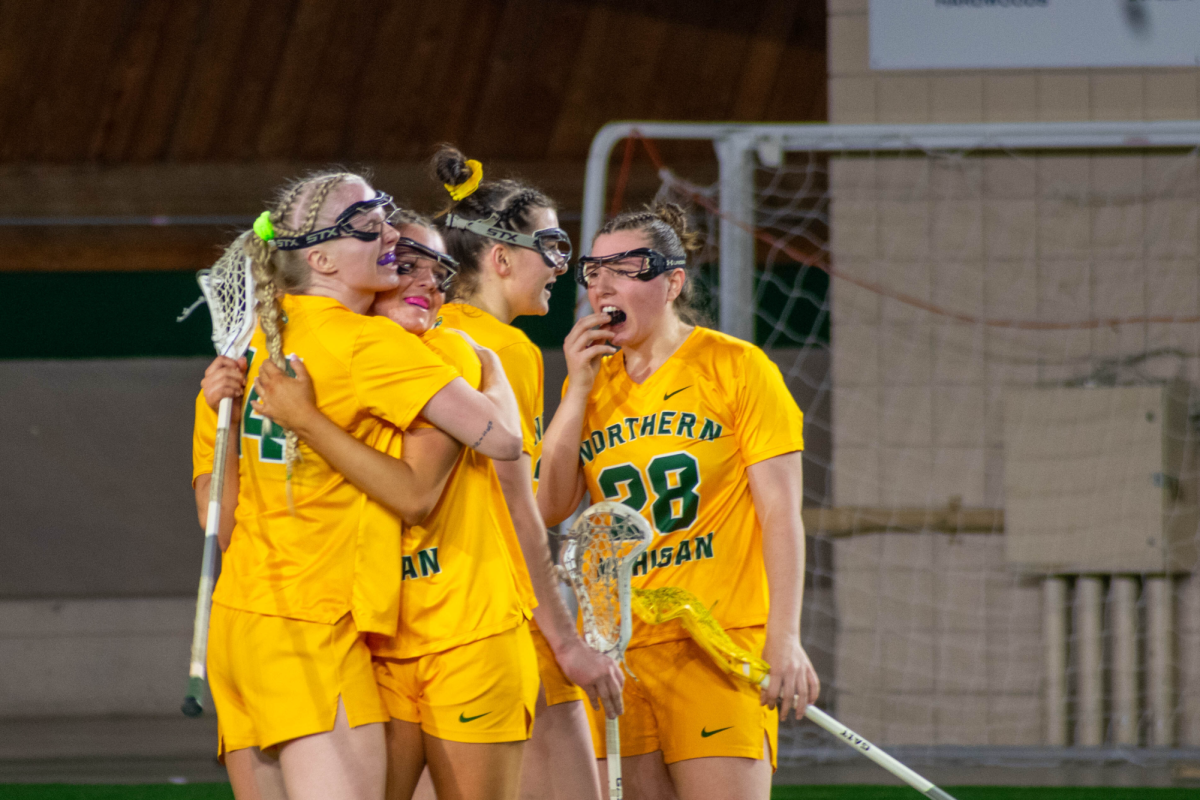Someday in the not-so-distant future, it may be commonplace for students to listen to lectures, watch PowerPoint presentations and engage in classroom discussions all in a virtual reality classroom–and all without ever getting out of bed.
For a select group of Northern students this semester, this is a present-day reality. The class, Issues in New Technology (BC495), will spend part of their semester meeting through the virtual reality program Second Life.
“For the final part of the semester, we’ll be diving in and using Second Life as a case study for addressing the issues we’ve talked about earlier in the semester,” said professor Mark Shevy, the instructor of the course. “Eventually, we’ll be holding a few of the classes completely virtually, and if that works out well, maybe in the future we’ll look into maybe holding entire classes in Second Life.”
Second Life was launched in 2003 by Linden Research, Inc. and has since grown by the second. Users can download the program, called the Second Life Viewer, free from SecondLife.com and in minutes have access to their virtual world.
Each user, called a Resident, can communicate with other Residents through his or her avatar, which is a character representing the user. According to the Second Life Web site, as of March 29 there were 13,064,608 total Residents-1.3 million of which have logged on in the last 60 days.
Although it may appear similar to The Sims or other popular video games, Shevy said there is a vast difference between Second Life and those programs.
“Most people who know more about it wouldn’t call it a game,” Shevy said. “You wouldn’t call MySpace a game. This is more like MySpace, where people create a presence online and use it to interact with one another.”
Shevy chose to base a majority of his course around Second Life due to its steady rise in popularity among not just casual Web surfers and gamers, but educators and businesses as well. Some have even begun to wonder if Second Life is the future of the Internet.
“Some explain it as being the next version of Facebook or MySpace, where instead of having a two-dimensional page, you have a three-dimensional virtual reality,” Shevy said. “The next wave of the Internet has been promoted as having more video content, more multimedia presentation, but also being more immersive and more like virtual reality. And so, a lot of people are starting to look at Second Life as maybe our first view of the new way that we’re going to experience the Internet.”
Peter Thomas, a senior broadcasting major, is one of the 24 students enrolled in the class. After spending the beginning of the semester working on Web pages and blogs, Thomas sees Second Life as the real thrill in the course.
“I think that more and more we’re going to see this program being used as an alternate reality,” Thomas said. “Overall, I think it’s been a good learning experience for me and I’d recommend it to friends of mine who aren’t even broadcasting majors, just to get familiar with the program.”
Shevy was introduced to Second Life by instructors at other universities, and said the possibilities for using it educationally were immediately apparent.
Much like the current online courses at NMU or WebCT, Shevy said Second Life can add another dimension to distance learning.
“It will be better than just a discussion board or a chat room in that you feel like you’re at an actual place,” he said. “You can look around and count how many people are in the room with you and who is actively talking. It has a lot more elements of being in a physical classroom.”
Shevy also explained how different technologies can be used in Second Life to simulate an in-person classroom experience.
“I’ve been learning how to use PowerPoint presentations [in Second Life]. Unlike a chat or a discussion, I can actually run a PowerPoint presentation and I can give out notecards,” he said. “All I have to do is tell people to click and they can have all my lecture notes right there. They can download them and follow along.”
Luis Gomez, a graduate student enrolled in BC495, said he’s enjoyed learning in this innovative manner because of the possibility that Second Life could be the next big step for the internet.
“I’ve learned a lot, and I thought of myself as pretty technology savvy,” Gomez said. “I thought that I was up to date, but there’s a lot of stuff that I didn’t know about before taking this class. It definitely keeps you up to date as far as what’s in today’s world and what to expect.”
Although Second Life has a lot of momentum in the world of technology, Shevy said, it’s possible that it may just be the tip of the iceberg for the Internet’s next generation.
“Just as Mosaic and WebCrawler were some of the first Internet browsers, they weren’t the ones that stuck around for the long haul,” he said. “We’re still waiting to see how long Second Life will last. It has a lot of momentum, but a lot of new technology has momentum when it first comes out.”




